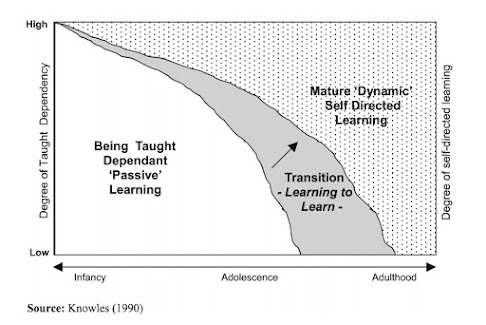The salient distinctions Gray draws between reflection and critical reflection are outlined in Table 1.1(a) below:
Table 1.1 (a): Gay’s distinctions between reflection and critical reflection | ||
Reflection | Critical reflection | |
1 | Reflection is described as an active and purposeful process of exploration and discovery, often leading to unexpected outcomes. It is the bridge between experience and learning, involving both cognition and feelings (Boud et al., 1985), aiding managers in achieving emancipation from ‘perspective-limiting assumptions’ (Kayes, 2002: 138). | Conversely, critical reflectivity is described as the surfacing and critiquing of tacit or taken-for-granted assumptions and beliefs. This takes place through the dialectical relationship between reflection and action in which reflection is a precursor to action, but the process of action leads to further thinking and reflective processes (Hoyrup, 2004). |
2 | Reflection is important because it allows us to critique our taken for-granted assumptions, so that we can become receptive to alternative ways of reasoning and behaving (Raelin, 2001). | On-the-other-hand, critical reflection (making an assessment of the validity of one’s assumptions, examining both sources and consequences) and critical self-reflection (reassessing the way one has posed problems and one’s orientation to perceiving, believing and acting). |
3 | Reflection involves the absorption of a concept into personal knowledge structures, relating the concept to the person’s other forms of knowledge and experience (Leung and Kember, 2003). | Moreover, by critiquing the presuppositions on which beliefs are built, critical reflection encourages learning at a deeper, transformative level (Mezirow, 1990). |
4 | Reflection has been described as the practice of ‘periodically stepping back to ponder the meaning of what has recently transpired to ourselves and to others in our immediate environment’ (Raelin, 2002: 66). | Similarly, adopting a critical perspective means making ‘a ruthless and courageous examination and deconstruction of assumptions, norms, expectations, limitations, language, results and applications of one’s work’ (Boyce, 1996: 9). |
5 | Reflection can also be seen as a form of response to experience–the total response of a person to a situation or event (Boud et al., 1985). Reflective learning may also involve disbelieving what was previously held to be true (Weick, 2002). | |
6 | Reflection, is not restricted to being a process of quiet self-fulfilment, but is a political process directed against irrationality and injustice (Kemmis, 1985). | Conversely, critical reflection must be a social act of collective empowerment if it is to move beyond personal to social transformation (McLaren and da Silva, 1993). |
7 | Reflection requires some facilitation ‘to help learners reframe their knowledge base’ (Raelin, 2005: 135). | Whereas, critical reflection needs to be shifted from individual to organizational learning and from a focus on individual to collective action if it is to be a component in the politics of organizational learning and change (Vince, 2002). |
8 | A direct, primary experience may also lead to non-learning if the reaction to the experience is one of mental or physical discomfort–a personal crisis, for example, may serve to absorb attention rather than facilitate calm reflection. Anxiety and avoidance strategies may also serve to hinder learning (Vince, 1996). | However, critical management pedagogy needs to embrace both content (organizational procedures and relations) and processes (participative values) (Reynolds, 1999a). |
Adapted from B867 Reading 1, (2016) | ||






